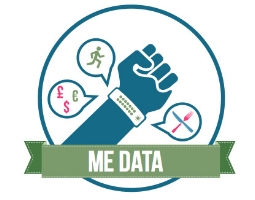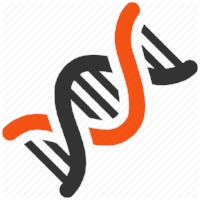What if there was a personal framework that could provide you with advance notice of a pending chronic disease? If you had the power to prevent diabetes, heart disease, or another chronic illness in yourself, would you make the changes required?
A quantified-self framework could leverage personal data from your lifestyle, nutrition, and exercise choices, combining it with data from your own personal genetics alongside a functional view of your body’s key biological systems (“your operating system”). With Functional Medicine at its core, a health revolution is coming that has the ability to greatly improve health outcomes for those that embrace a data-driven health plan. This post, and accompanying presentation, postulates a basic quantified health framework in order to stimulate awareness, hope, and collaboration on refining such ideas that have potential to help so many.
Play the below Prezi for a walk-through of the framework with voice-over narrative (give it about 10 seconds to load) or alternatively read the long-form text post below.
In the United States, more than 75% of healthcare costs are due to chronic conditions. In 2014, the U.S. spent 17% of its GDP ($3 trillion) on health care - twice the per-capita expense of other industrialized countries but with very poor health outcomes. Paraphrasing Dr. Mark Hyman, Chairman of the Institute for Functional Medicine (IFM), 1 in 2 Americans have “diabesity”, a term he coined to describe the myriad of health problems spanning mild insulin resistance, overweight, obesity, diabetes and related complications. Because chronic disease is driven by diet and lifestyle choices, as well as environment and genetic influences, conventional medicine’s acute care model is failing at dealing with these staggering cases.
Functional Medicine Tree
Functional medicine is a new model for assessment, treatment, and prevention of chronic disease which fully embraces the latest genetic science and systems biology to identify the root causes of chronic disease which are rooted in lifestyle choices, environmental exposures, and genetic influences. Unlike conventional medicine, functional medicine enables health professionals to practice proactive, predictive, personalized medicine, and it empowers patients to take an active role in their own health.
The Functional Medicine Tree, developed by IFM, is shown as the centerpiece of the health framework.
At the base of the Tree are its roots, “your external system inputs”, which are personal lifestyle choices such as sleep, exercise, nutrition, stress, relationships and environmental factors. These foundational, controllable lifestyle factors are processed into your body, filtered through your personal gene expression, and influenced by specific predisposing factors (antecedents), discrete events (triggers), and ongoing physiological processes (mediators). Simply put, when your biological system can’t process an input well, it may result in fundamental system imbalances at the trunk of the Tree. These imbalances occur in your body within one or more of the IFM’s seven core biological systems:
· Assimilation: digestion, absorption, microbiota/GI, respiration
· Defense and repair: immune, inflammation, infection/microbiota
· Energy: energy regulation, mitochondrial function
· Bio-transformation and elimination: toxicity, detoxification
· Transport: cardiovascular and lymphatic systems
· Communication: endocrine, neurotransmitters, immune messengers
· Structural integrity: sub-cellular membranes to musculoskeletal integrity
These seven biological systems are running all day, every day as your body’s operating system. Imbalances may be subtle at first, with minimal noticeable adverse signs or symptoms, and they may go undetected for weeks, months or years by conventional medical diagnostics. These core system imbalances are the mechanisms of disease that can eventually result in the signs and symptoms that categorized into a diagnosis by conventional medicine, represented by the branches and leaves in the Tree. Conventional medicine operates at the tail end of the process, treating individual symptoms rather than the person as a whole. Conversely, functional medicine operates upstream to identify root causes and systemic imbalances in trunk of the Tree in attempts to solve or alleviate chronic conditions altogether.
Two simple cases provide a comparative example of the typical differences in diagnostics and treatments between conventional and functional medicine. These cases are illustrative only to impart the fundamental differences in each clinical approach.
Diabetes and Heart Disease
Patient presents over time with escalating blood sugar, insulin levels, belly fat, obesity and bad cholesterol profiles. Recently diagnosed with diabetes.
· Conventional Medicine – May make passing reference to some dietary changes, but generally prescribes insulin shots to “manage” blood sugar and statin drugs to “manage” cholesterol levels. Both drug prescriptions would be permanent with hopes of slowing resulting heart disease, potential stroke or other chronic disease events.
· Functional Medicine – Makes whole patient diagnosis based on advanced testing that tracks root cause back to patient’s dietary consumption of sodas, processed foods, sugar and simple carbs (bread, cereal, pasta) combined with chronic stress levels. Combination of these lifestyle factors have resulted in imbalances in the communication, defense/repair and transport systems. Through aggressive nutritional intervention, supplementation and stress reduction techniques, patient is able to reverse their early-stage diabetes, return cholesterol levels to normal, and stop insulin and statins drugs altogether.
Digestive Distress
Patient presents with digestive distress, heartburn and mild depression.
· Conventional Medicine – Diagnoses patient with irritable bowel syndrome, gastroesophageal re-flux and depression. Puts patient on 3 drugs - dicyclomine for IBS, an H2 blocker (Pepcid) for re-flux and an SSRI (Lexapro) for depression. Medications likely required long term, or at least periodically to dampen flares of symptoms.
· Functional Medicine – Through functional testing, identifies system imbalances in the assimilation and defense/repair systems. Traces root causes to poor nutrition due to high consumption of grains, gluten and food allergies. These imbalances have encouraged bacterial overgrowth, malabsorption of vitamins, digestive distress and low serotonin levels causing depression. Through aggressive natural treatments of the gut, nutritional modifications and supplements, all symptoms reside in less than 6 months.
Functional medicine does not seek to replace conventional medicine but rather offers innovation and alternative treatments to avoid chronic disease. One can think of functional medicine as an open-minded start-up that innovates rapidly without the entrenched interests, rigid approaches and decades-old models of conventional medicine relative to chronic disease.
For a deeper dive into Functional Medicine, please read this overview from The Institute for Functional Medicine.
Health Metrics
How can we personalize the Functional Medicine Tree to understand our quantitative health?
How can each of us know our key metrics at each stage of the Tree as a baseline and then see our progress or degradation over time based on our actions, treatments or life events?
This promise can be delivered by personal, integrated data collection combined with advanced statistical analytics leveraging scientific research, studies and patient populations. The holy grail future state of personal real-time health metrics streaming in, constantly updating our personal health measurement model may be years or decades away. But even today, many of the components are falling into place thanks to advances in mobile computing, genomics, biological sciences and big data technologies.
Lifestyle and Environmental Metrics
Mobile smartphone apps and wearables are evolving fast and already offer real-time or daily insights into many key lifestyle factors such as sleep (Sleep Cycle), meditation (Muse), exercise & movement (Fitbit), and nutrition (MyFitnessPal). Each iteration of these apps is more automated to reduce or eliminate the burden of manual data entry on the user. In addition, sensor-based devices such as smartwatches (Apple Watch) and scales (Aria) can collect basic biometrics like heart rate, body weight and body mass index. Lastly, there are a myriad of apps that offer personal journaling in many forms to collect more subjective data like mood, emotions, stress and experiences. For instance, Symple allows logging of customized factors against personal symptoms every 6 hours as a rough starting point for finding correlations and triggers of ailments.
In the near-future, we will see more sensor-based devices, automation and artificial intelligence to digitize our health metrics. A breakthrough such a wearable device that is able to continuously monitor blood sugar, vitamin levels or other bio-metrics as a useful input to the functional medicine early detection models could take us a huge step forward. While further off, companies are working on advances in nanotechnology that may lead to microscopic agents that can operate in our bodies, providing continuous bio-metrics, system feedback and identification of specific target cells or processes.
Personal Genomics Data
Thanks to the exponential developments in genomics, DNA sequencing costs have plummeted making this technology affordable for many. Services like 23andMe allow sequencing with good coverage of common variations across the entire genome. 23andMe correlates your DNA against scientific research studies to offer some personal risk factors with various probabilities. These studies are growing in volume all the time, retroactively adding data to your personal DNA profile.
However, the real surprise in the genomics revolution was the limited correlation of less than 25% found between raw genetic makeup and documented incidents of chronic disease. Instead, science points to increased importance of the epigenome whereby our genes are controlled by chemical attachments caused by internal and external factors. Many such factors are influenced by our lifestyle choices including environment, nutrition, sleep, stress and exercise. Epigenetic changes vary among individuals but can help determine which genes are turned on or off. Some external factors have been shown to change our gene expression, causing genetic errors, which in turn are proven related to conditions including cancers, metabolic disorders and degenerative diseases. More amazing are the implications that changes in lifestyle factors like diet have been shown to switch off the genetic errors, resolving the underlying problem imparting a new level hope and control to the patient.
This is complex science. So how can we get metrics about our exposome, which contains cumulative measures of environmental influences and associated biological responses throughout our lifespan, including exposures from the environment, diet, behavior and endogenous processes? A groundbreaking project is underway to map the human exposome that one day will result in the ability to track a person’s exposome through a blood test and monitor changes over time. The big data from this technology, integrated with functional medicine analytics and lifestyle monitoring, will enable major leaps in personal health measurement and analytic capabilities.
Functional and Personalized Medicine Metrics
A growing number of number of functional tests across the seven biological systems are now available. These tests from providers like Genova Diagnostics go deeper than conventional tests spanning areas like adrenal fatigue, hormone imbalances, intestinal bacteria overgrowth, yeast cultures, dysbiosis, immunology, leaky gut, oxidative stress and low-level metabolic markers and vitamin levels. These test results measure system imbalances at a granular level against standard ranges, providing doctors and patients data to diagnose root causes. Tracking these functional metrics over time, alongside prior treatment plans and ongoing lifestyle metrics, enables a personalized framework to monitor effectiveness and impacts to overall health balance.
Integrated Health Records Data
Integrating conventional medicine’s health records, prescriptions, diagnoses, procedures and surgeries are the last metrics input group. Standard or specialized test results and doctor’s visit outcomes across all organ system specialties would feed the health framework model. This data is especially useful for monitoring the existence of chronic disease, standard metrics or other required acute care.
Measuring Personal Health
So how can we pull it all together, providing individuals with an easy to comprehend scorecard about their health and wellness? Using principles of business financial statements and a little imagination, a starter health measurement framework emerges that can evolve to be more sophisticated over time.
Each of us is born with a life expectancy based on current environment, medical technology, treatments, products and knowledge. From this infusion of life, imagine each individual as granted an initial health points balance. Let’s name our example individual Sandy. This year Sandy is 40 years old and when she was born her life expectancy was 80 years so she’s lived through, or used up, 50% of her initial health points balance of 1 million points. Sandy has led a healthy lifestyle in recent years, working with a functional medicine practitioner. She’s adopted a healthy diet, used routine exercising and massage therapy to reduce stress, taken recommended supplements/vitamins and has built loving relationships. Let’s review Sandy’s personal Health Points Statement for 2016.
During 2016, Sandy earned a total of 3,625 new health points. Her excellent lifestyle choices in nutrition, exercise, and supplements accounted for most of these earned points. These points earned represent real, physical vitality where she’s boosted her expected health outcomes above the standard individual for this year.
When considering Sandy’s health points consumed, her standard aging based on original life expectancy used up 12,500 points. Despite all her efforts, Sandy does have a system imbalance in her digestive system which cost 350 points in accelerated aging due to related inflammation and some vitamin/mineral malabsorption which have a cascading effect in other biological systems. During 2016, Sandy did not experience any extra major costs from drug side effects, tipping points, injuries or trauma. System tipping points happen when a long-running system imbalance triggers a chronic disease. Examples of tipping points include when a pre-diabetic flips into a full-blown diabetic, or a “high cholesterol” patient flips into full-blown heart disease. So in total, Sandy expended 12,925 health points out in 2016 with a small positive gain of 150 points from a minor procedure that resolve an ailment.
It’s a good thing Sandy “made up some time” with her healthy lifestyle adoptions and health points earned. While none of us will live forever, Sandy bought herself more quality time through her lifestyle choices by only using a net balance of 9,150 health points this year.
Now we’ll take a look at Sandy’s personal Health Balance Sheet at the end of her 40th year in 2016.
Sandy’s total health assets are comprised of 739,000 points with 83,000 points in the current health category (above standard) for increased physical strength, organ reserve and immunity. These current health assets were accumulated by years of good lifestyle choices that give Sandy an added edge in weathering sickness, easier day-to-day living and better immunity.
Her long term health points are mostly comprised of the net value of her biology. Against the initial infusion of 1 million points established at her birth, exactly 50 % have been consumed based on standard aging calculations. Due to system imbalances and sub-optimal lifestyle choices early on in her life, she has a deficit of 14,000 points of accelerated aging. Luckily for Sandy, her 75,000 points accumulated from positive lifestyle adjustments more than offset that. A 50,000 health point cumulative adjustment has been awarded based on technological advances that have raised her life expectancy since she was born. Hopefully she’ll see more such innovation in the near future. Netting all of her physical asset balances together, she’s at 611,000 points which is 111,000 points or over 20% higher than she’d be based on standard aging calculations. Lastly she has small positive balances accumulated based on her level of emotional maturity, spiritual pursuits, and wisdom.
On the health liabilities and equity side, Sandy has several current liabilities totaling 50,000 points due to some system imbalances and ingrained patterns that are negatively affecting her nutritional health. Luckily she does not appear close to a major tipping point that would transfer a current liability into a chronic, long-term disease like diabetes, high blood pressure, heart disease, arthritis, cancer or obesity. This is great and validating news for Sandy and her approach. Tracing back through her health equity, her initial life expectancy of 1 million points, plus some technological advances, nets against her cumulative health statements from each year (e.g. aging) leaving her with 739,000 total health liabilities and equity to balance her health assets.
Possibilities
This simplified, hypothetical example is put forward as a starting point for discussion. If a unified analytical and data model could combine the 4 categories of personal health metrics through the functional medicine prism, using advanced statistical techniques and actuarial models, then over time we could monitor the health balance of each individual. While initially, these models in practice might be only updated annually as enhancements in data collection and technology occur, there may be a day when algorithms could update our health statement and balances in near real-time. For those pursuing optimal health, such insights could close the loop from years to days or weeks to react to our personal, negative trends. Tighter iterations, direct correlations between our actions, life events and health status could enable us to achieve optimal life expectancy and greatly improve our health outcomes for those that embrace a data-driven health plan.
What other factors or approaches would you suggest for a unified health analytics framework? Do you think it’s possible to achieve?








